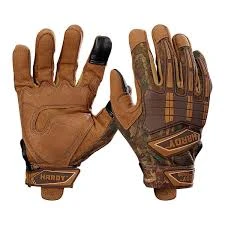road workers safety clothing
Road Workers Safety Clothing Ensuring Protection on the Job
The safety of road workers is paramount in the construction and maintenance of our transportation infrastructure. These individuals face a myriad of hazards every day, from heavy machinery to unpredictable traffic conditions. To minimize these risks, the use of appropriate safety clothing is not just advisable; it's essential. This article explores the importance of safety clothing for road workers, the standards that govern its use, and how it contributes to their overall safety.
Understanding the Risks
Road workers are exposed to various dangers, including exposure to moving vehicles, falling objects, and harsh weather conditions. The risk of accidents is particularly heightened in work zones, where visibility can be compromised due to construction equipment and traffic. Proper safety clothing plays a critical role in enhancing worker visibility and providing a barrier against potential injuries.
The Role of High-Visibility Clothing
High-visibility clothing is a fundamental requirement for road workers. These garments are designed to make workers easily seen by motorists and other personnel on-site, especially in low-light conditions. The use of bright colors like fluorescent yellow, orange, or green is standard, complemented by reflective strips to increase visibility. These features are crucial during both day and night shifts, helping to prevent accidents that can result in severe injuries or fatalities.
The American National Standards Institute (ANSI) has established guidelines that dictate the requirements for high-visibility safety apparel (HVSA). According to ANSI/ISEA 107, three performance classes are specified, based on the work environment and the level of visibility required. Class 1 is for environments with low hazards, Class 2 is for moderate-risk settings, and Class 3 is for high-risk areas where visibility is critical. Compliance with these standards is essential for ensuring the safety of road workers.
Additional Protective Features
Beyond visibility, safety clothing for road workers often incorporates various protective features to safeguard against specific hazards
. For example, garments may includeroad workers safety clothing

1. Waterproof Materials In many regions, roadwork continues despite inclement weather. Waterproof clothing helps keep workers dry, preventing hypothermia and maintaining comfort and focus on the job.
2. Impact Protection Some safety clothing may integrate padding or reinforced materials to protect against impacts from falling objects, which are common on construction sites.
3. Heat-Resistant Fabrics In hot environments, reflective and breathable materials can be utilized to keep workers cool while also protecting them from heat-related illnesses.
4. Cut-Resistant Gloves The use of specialized gloves that resist cuts and abrasions is essential, especially when handling sharp tools or materials.
Training and Compliance
While wearing safety clothing is vital, it is equally important for road workers to be trained on its proper use and maintenance. Employers should provide education on understanding the significance of high-visibility apparel, how to choose the right garment for the specific task, and the proper care to ensure longevity. Regular inspections of safety clothing should be conducted to check for wear and tear, ensuring that garments remain effective in their protective roles.
Conclusion
The safety of road workers is a collective responsibility that involves employers, workers, and regulatory bodies. Implementing and adhering to safety standards for road workers' clothing can significantly reduce the risks associated with highway and road construction. High-visibility clothing and additional protective gear are not just pieces of equipment; they are life-saving essentials that keep workers safe on the job.
As cities continue to modernize and infrastructure evolves, the emphasis on the safety of those performing the often hazardous work of maintaining our roadways must remain strong. Investing in quality safety clothing is a small price to pay for the immense value of human life and well-being. By prioritizing safety clothing and ensuring compliance with established standards, we can create a safer working environment for every road worker, allowing them to perform their roles effectively and return home safely at the end of each workday.
-
Aero Safety Helmet - OEM Gomax Aero Adult Safety Helmet, Affordable Protection for Cyclists
NewsJun.10,2025
-
Buy uvex pheos abs alpine safety helmet – OEM & Cheap Options from China Supplier
NewsJun.10,2025
-
Volman Safety Helmet - Premium Durable Protection for Industrial Workers
NewsJun.10,2025
-
Top Safety Helmet Suppliers in UAE Reliable Brands & Affordability
NewsJun.10,2025
-
Affordable Safety Helmet with Visor & Earmuffs - OEM China Supply
NewsJun.10,2025
-
Affordable Safety Clothing in Deer Park, TX Cheap & OEM Options
NewsJun.09,2025
